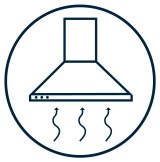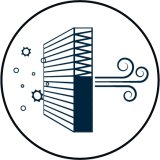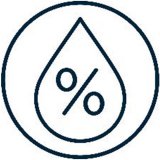Indoor AirPlus and Viruses, Bacteria and Mold
Indoor AirPlus is a comprehensive, whole building system approach to a healthier home. As we encounter viruses, bacteria, and other pathogens, Indoor AirPlus labeled homes can help provide cleaner air to breathe and reduce exposure to airborne pollutants and contaminants in our homes now and into the future.
How high performance homes can help protect homeowners from viruses or other pathogens:
As we work to help prevent the spread of COVID-19 there have been questions about how high performance building systems, including Indoor AirPlus homes, can be used to help provide some protection from viruses like SARS-CoV-2 (the virus that causes COVID-19), bacteria, and other pathogens. Indoor AirPlus is a voluntary program that helps homeowners improve the indoor air quality in their homes by providing home construction practices and product specifications that minimize exposure to airborne pollutants and contaminants. Having an Indoor AirPlus home is not enough on its own to provide comprehensive protection from viruses. However, improved indoor air quality supported by the use of Indoor AirPlus specifications is an important tool within a broader plan to protect occupants from the risk of COVID-19.
Features of an Indoor AirPlus Home and how they help:
Mechanical Ventilation

The Centers for Disease Control and Prevention (CDC) recommends increasing building ventilation rates to reduce the concentration of any viruses present. Indoor AirPlus homes include whole building mechanical ventilation systems that allow the homeowner to control ventilation rates and dilute contaminants in the air.
Local Exhaust Ventilation

Viruses and bacteria can be present in airborne particles released by the swirl of flushing water in the toilet. Indoor AirPlus homes provide local, mechanical venting directly to the outdoors in each bathroom which will help exhaust potentially contaminated air close to the source.
Filtration

High levels of filtration can help remove particles from the indoor environment, including particles that may contain viruses. The Indoor AirPlus Construction Specifications require a MERV 8 filter to be installed in central forced-air HVAC systems, but EPA highly recommends a MERV 13 filter for added protection.1
Humidity

It is important to keep the indoor air dry enough to help prevent the growth of mold. If indoor air is too humid, moisture can condense on surfaces and enhance the growth of mold. Potential health effects and symptoms associated with mold exposures include allergic reactions, asthma, and other respiratory complaints. 2 The moisture in Indoor AirPlus homes is carefully controlled, both mechanically and by the tightness of the home, to reduce mold growth and maintain a healthier level of humidity.
Pests

Pests can be a vector for disease and bring undesirable pathogens into homes. Indoor AirPlus homes minimize pathways available for pests to enter the home by sealing penetrations and blocking other building openings with corrosion-proof screens.
Still have questions on how an Indoor AirPlus home can benefit you? Check out the Benefits and Features page or contact us at Indoor_AirPlus@epa.gov
1 https://www.epa.gov/sites/production/files/2018-07/documents/residential_air_cleaners_-_a_technical_summary_3rd_edition.pdf
2 https://www.epa.gov/mold/ten-things-you-should-know-about-mold
